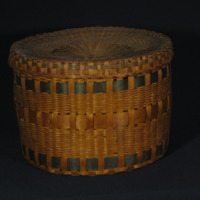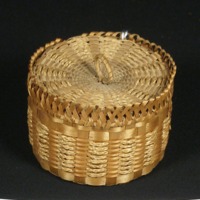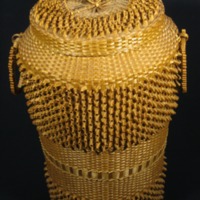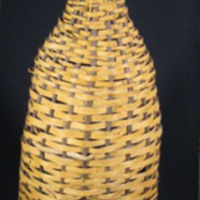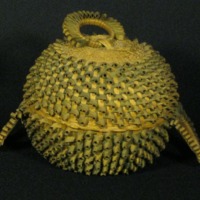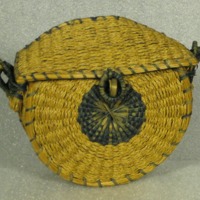Mid-1800s through 1920s
Native American arts and crafts were popular souvenirs from the mid-1800s through the 1920s. Native basket makers would travel to summer tourist resorts, such as the White Mountains in New Hampshire, to demonstrate basket making and to sell the baskets they made over the winter months. Native Americans also set up businesses where they lived. The Watso family of Newbury and Claremont and the Sadoques family of Keene are two examples of Abenaki basket-making families living in New Hampshire. A few merchants, Native and non-Native, also marketed Native baskets widely, sometimes producing catalogs of standard basket styles and sizes. Through the merchants Native people gained a larger market for their wares but lost control over price and some creative decisions.
Both basket styles and the technology used to make baskets changed late in the 1800s. Gauges for cutting even strips, splitters and molds enabled basket makers to produce baskets of standard shapes and sizes. The “Fancy Baskets” of this period were designed to appeal to Victorian tastes with wood splint curls, smooth interiors, commercial dyes, braided sweetgrass and whimsical shapes. - Mt. Kearsarge Indian Museum

